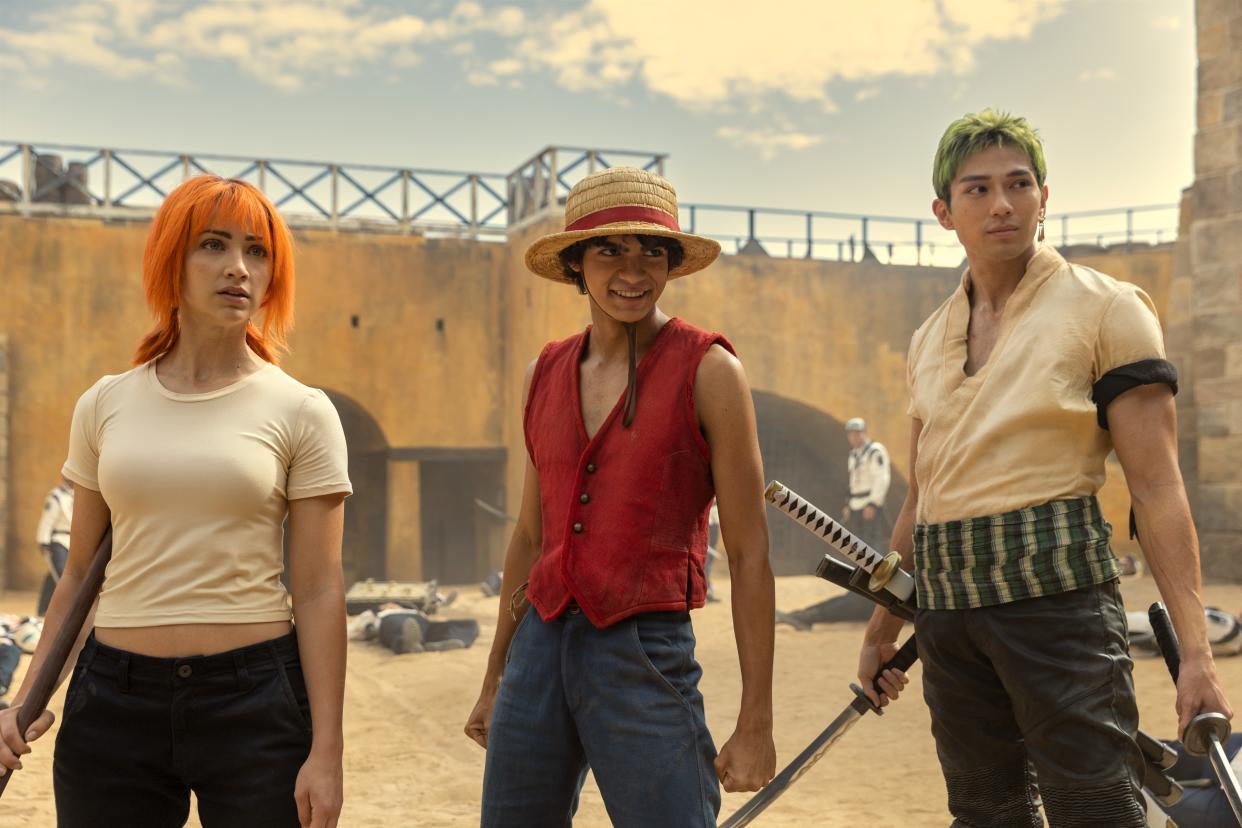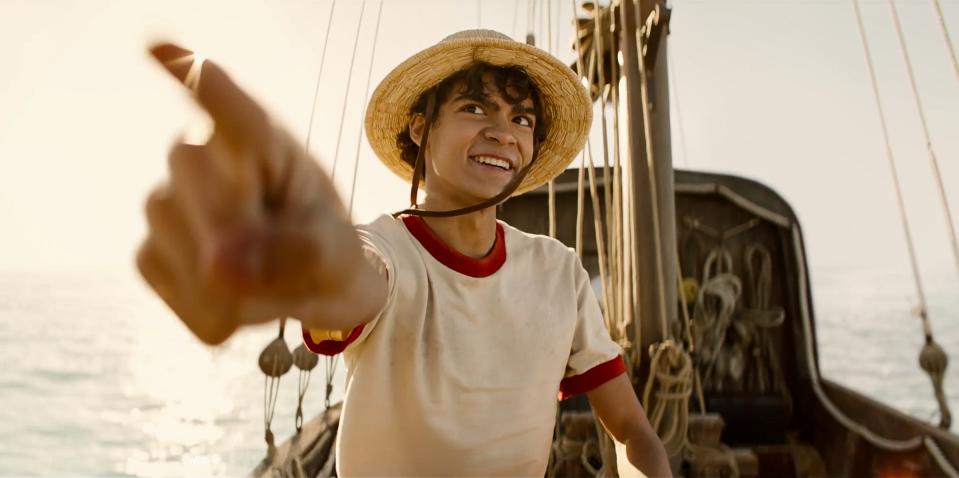Netflix’s ‘One Piece’ Adaptation Sets Sail on ‘Black Sails’ Ships

- Oops!Something went wrong.Please try again later.
Eiichiro Oda’s “One Piece” has been running in manga and anime form for nearly three decades (and a full thousand episodes for the latter). That its live-action adaptation for Netflix consumed four years of co-creator and showrunner Steven Maeda’s life feels like a drop in the bucket comparatively.
“The rubber meets the road finally,” Maeda told IndieWire in an interview a few hours before the series’ premiere. What’s most remarkable are not the obstacles the show faced in its journey to completion (all numbingly familiar for any project post-COVID-19 lockdown) but that the exuberance and thrill of the story remain undiminished by the difficulties. “It’s a very joyous manga and a very joyous anime, and we set out to make a show filled with optimism and hope. I said from the beginning of the process, ‘Luffy’s superpower is to remind people that they have dreams and to pull those dreams forward.’”
More from IndieWire
That’s very true, but for those who are unfamiliar with one of the biggest pieces of IP on the planet (and many Americans are), Monkey D. Luffy’s literal superpower is that he’s very, in the words of Phoebe on “Friends,” “bendy.” That is, he ate Devil Fruit and gained the power of rubber, which comes in surprisingly handy as one sails the treacherous seas with one’s ragtag crew of misfits while battling far more villainous pirates also in search of the treasure called One Piece, which will endow its owner with the title King of the Pirates.
That power could be laughable if the VFX were wrong. But of all the conversations Maeda, co-showrunner Matt Owens, and team had about the series, the ability to pull off Luffy’s rubber limbs was one of the most “intensive.” “We knew that would be a thing people really looked at hard. One of the things I was very cognizant of was stretching — even very, very well down — doesn’t look great,” Maeda said. “Especially when you have time for your eyes to linger, it just feels fake. Part of what we did to protect the stretchy power was twofold. One was to make it fast. Anything Luffy does was very fast, like a rubber band snapping. And the other thing that worked really well for us was not allowing Luffy to stretch across the screen on the x or y axis but to stretch or punch or kick towards or away from the screen. That was another way to not let your eye linger on the effect.”

But Maeda was correct about Luffy’s other skill: Luffy is also the kind of cheerfully optimistic leader that one would hate if he wasn’t charismatic enough to pull it off. And casting that role required an actor charismatic enough to pull it off, too. Enter Iñaki Godoy.
“He just embodied the character so fully, and it was a matter of saying, ‘We have to get this guy, otherwise we’re going to be in trouble,’” Maeda said. “We watched so many casting tapes, and it’s a very very hard affect to get right. In his undying optimism, he can come off as annoying, kind of a con artist trying to sell you something, and that’s all wrong for Luffy. It has to come from a place of genuine emotion and genuine believability.”
Over its eight episodes, that genuine emotion remains a touchstone for all of the “One Piece” characters, largely thanks to including Luffy and his crew’s backstories. “We talked about versions that cost less,” Maeda admitted. “The backstories are wonderful but incredibly time intensive and expensive — you’re building sets for three to five scenes across an episode or two. That’s a lot of construction and spending a lot of money to get those backstories in.”
Maeda stressed that the budget was “a very healthy one,” which was only aided by the strategic decision to film in South Africa. The depth of the area’s crew roster and the relative price point in construction were significant factors, but there was added impetus thanks to the four-season Starz series “Black Sails.” Or, more precisely, what “Black Sails” left behind.
“They had all these ships from ‘Black Sails’ we repurposed, and our production design team did a wonderful job,” Maeda said. “Those ships are three-quarter sized, but they’re still gigantic and need to be rigged correctly and sails hung correctly. Most of what you see when you’re on those ships is the real deal. We needed the expertise of the crew in Cape Town to pull that off.”
Maeda said he and the cast all got chills once the ships were dressed and prepped; after spending so many years in the world of “One Piece” (including a crash course before filming for most of the cast), to walk onto Luffy and his Straw Hat Crew’s ship, the Going Merry. And if that’s how it felt for Maeda, it only fueled his desire to deliver an adaptation that bucked the current belief that live-action anime adaptations are “cursed.”
“I knew there would be a lot of expectations, especially from the fans who are very protective and rightfully so,” Maeda said. “They don’t want their favorite manga to not be representative of the emotions they felt the first time they read it. I just wanted to faithfully keep all the fun and goofy moments while never giving emotion short shrift. That was the No. 1 goal: You want to be able to have both of those things co-exist.”
Best of IndieWire
Where to Watch This Week's New Movies, from 'The Equalizer 3' to 'Perpetrator'
The Best Survival Movies, from ‘Cast Away’ and ‘The Revenant’ to ‘The Martian’ and ‘Alive’
Sign up for Indiewire's Newsletter. For the latest news, follow us on Facebook, Twitter, and Instagram.

